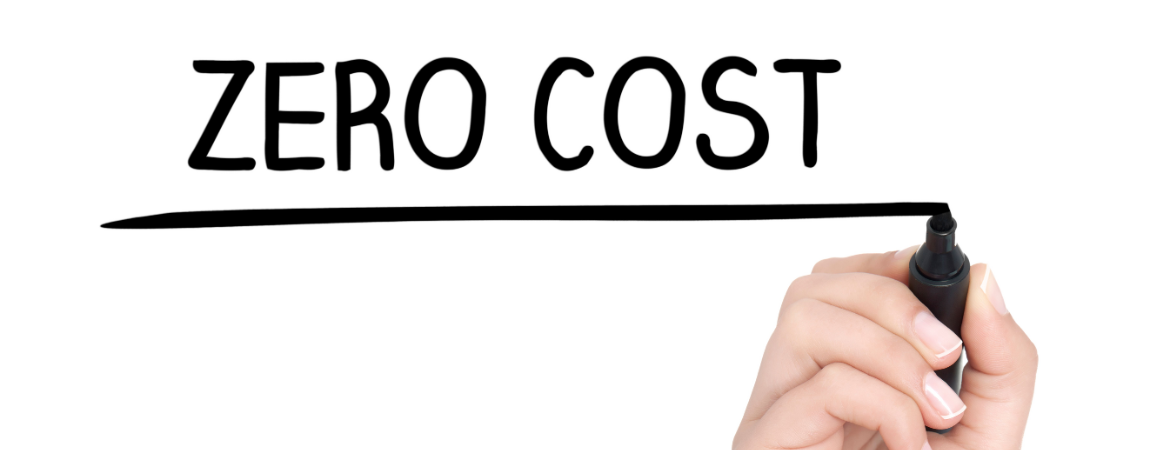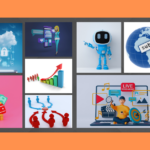So it’s time to launch, or perhaps you already launched and didn’t get the turnout you were hoping for. Now you’re wondering what you should be doing to get the attention your product deserves. Well, it’s time to start marketing.
You could start running ads, paying influencers to showcase your product, take out a billboard — wait. You don’t have a marketing budget?
Alright, it won’t be easy, it probably won’t be fun, but it’s doable.
Marketing is something that usually gets infinitely easier with a bigger budget. But that doesn’t mean that you need cash to make some noise.
So where should you start?
Table of Contents
Being the CMO, Salesperson, and Closer

Unfortunately, without a budget, you will probably end up playing the role of the CMO…. and Sales…. and the closer. It can be a lot of work, but you’ll learn a lot and get to know your customers very well.
But what exactly does it mean to play the part of each of these roles? Well, let’s break it down.
CMO
As the chief marketing officer, it’s your job to understand your client/user/customer. You should be getting to know them so well that you know what they like, dislike, where they spend their time, and their biggest pain points.
You then take that information and create campaigns very specifically for them.
What that might look like:
My target user spends most of their time on Reddit. They like to read and contribute to subreddits such as r/programming and r/sidehustles. They spend a lot of time complaining about coding cool stuff that never makes money.
So I can assume they enjoy coding/are programmers and they are trying to build a side hustle to generate some extra cash. It also sounds like their pain point has to do with not getting customers, or not connecting with the right people that would want to buy their product.
I also know where they spend most of their time (the subreddits) so now I know where I need to be in order to get in front of them with my own product. And since their pain point seems to be related to poor marketing, I know exactly what kind of language to use when I try to grab their attention and show off my product.
Despite what some might think, the CMO isn’t the one that should be doing the actual sales portion. That should be someone dedicated to selling the actual product. The CMO is responsible for understanding their target audience and how to talk to them, then strategizing on the best way to turn them into a paying customer.
The real sale happens with a salesperson.
Salesperson
A salesperson is someone who actually reaches out and engages with your target audience. But depending on your product/service, a salesperson might not even need to be a real person. It could be a landing page, sales brochure, advertisement, or just a simple post that generates awareness about your product.
In some cases, it’s important to have an actual salesperson ready and willing to talk to users about the product and share how it can help them. But a lot of times, a well-written sales page does the same job. Either way, you’ll want to incorporate everything you know/discovered as the CMO in order to prepare your ‘salesperson’.
They should know the audience well and talk to them using their language. What were the pain points they had? Where can I find them to do the actual selling?
Well, they are struggling with finding customers, so if you start a conversation with them around that, they will probably be pretty open to hearing your solution. Where can you start that conversation? On Reddit!
Closer
Finally, we have the Closer. Sometimes, the Closer can be the Salesperson/landing page/payment screen. Other times, the Closer might be the person who will actually be doing the work/following through on the service provided.
Either way, the Closer plays the important role of sealing the deal and turning your warm audience into a paying customer.
So after you find and learn about your audience as the CMO, and engage and build rapport as the Salesperson, the Closer is there to tell them what’s going to happen and guide them to the ‘Buy Now’ button.
So what does all of this look like together? Here’s the process:
The Zero Budget Marketing Plan

1. Define Your Audience
Learn everything you can about the people who would be most interested in your product or service. What are their pain points? What are the exact words they use to describe their pain points? Do they say that no one wants to buy their product or do they say that no one seems to know about their product? This is important because you want to use that specific language to describe your solution.
Here’s the difference:
My product is an all-in-one platform that helps you get sales by identifying the right audience and making sure they hit the ‘Checkout’ button.
OR
My product is an all-in-one platform that helps you find and engage your audience so that you can direct them to your website and make sure they hit the ‘Checkout’ button.
See the difference? It could be the same solution, but the language and problems are slightly different.
2. Making Some Noise
Once you define your audience, you need to engage them. There are a few different ways to do that.
- Start Outreaching
If you have an idea of people who might be interested, reach out to them. Send them a DM, an email, or a carrier pigeon. Anything to get in contact with them and start the conversation. But rather than just trying to sell them on your service, try asking if they know of anyone who might be interested in your product/service.
This is a much easier way to sell because it’s more indirect and doesn’t make it seem like you’re trying to just pitch the person. Instead, it gives them a way out to say “Yeah, I need that!” or “I might know a few people”.
- Contribute to the Conversation
Finding where your audience is on social media is great because it’s more conducive to discussion. For example, Reddit is full of people literally asking for solutions or help with their problems. Contribute to the conversation by providing your own experience and suggestions. Be sure to be value-focused first though, and don’t just straight-up pitch your product. Try to showcase your expertise and offer advice, and then naturally plug your product in without trying to sell it to their face.
- Partnering up
Finding someone who is already relevant/engaged with your target audience is another great way to make some noise. Oftentimes you might have to suggest a commission or affiliate deal to establish a partnership, but it can be well worth it if they can easily sell to an audience that already trusts them.
You can find these types of partnerships with blogs, influencers, websites, or even just people who are authorities within your niche.
- Getting Creative
Don’t be afraid to get creative and experiment with different things. Try posting relevant topics that might attract your audience and get them to engage. Then, once they are engaged, you can try to suggest your product in a more approachable manner.
3. Refine the Message
As you go through this process, try to collect as much data and information as you can. Are there other people that could benefit from your product? Are you receiving feedback on adding another feature? Collecting and understanding this information will help to refine and improve your marketing efforts, increasing conversion rates, expanding your audience size, and identifying other pain points you might not have initially thought of.
4. Stay Consistent

Finally, stay consistent. Don’t give up after hearing “no”. Marketing takes time and information to rise to its full potential. Keep listening to what people are saying, keep track of the feedback you receive, and constantly think about how you can improve your message to better reach people.
Additionally, listening closely could also let you know if your initial audience is an actual fit or not. In some cases, your initial audience might not end up being a great match. So you’ll have to just dig in and explore other audiences and see how they are expressing their pain points and struggles. Then start talking their language and see if it clicks!




